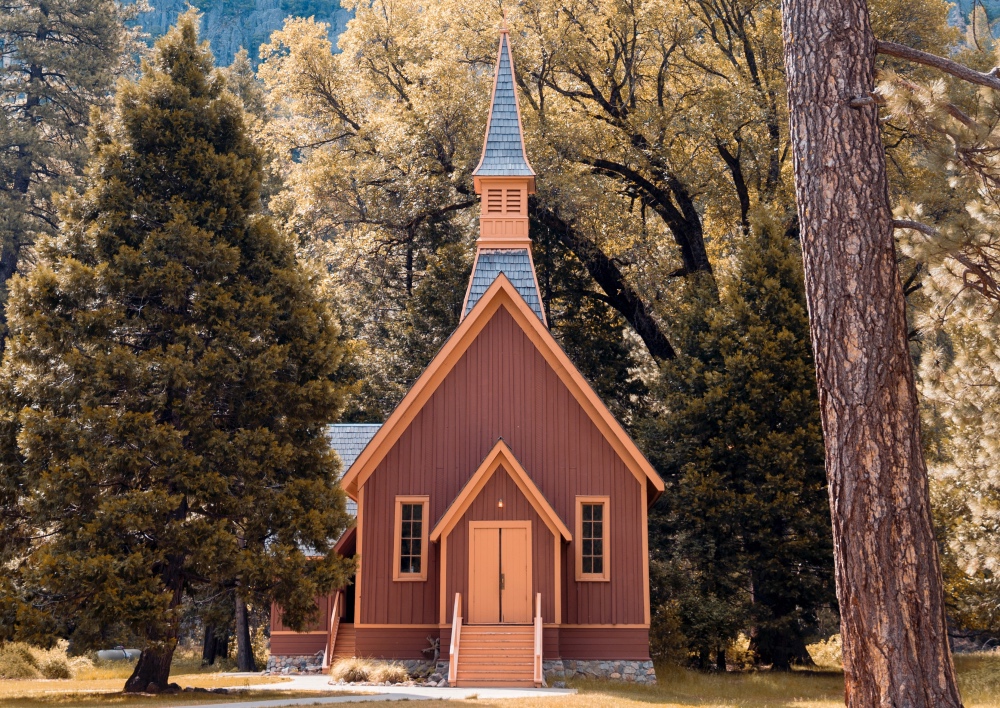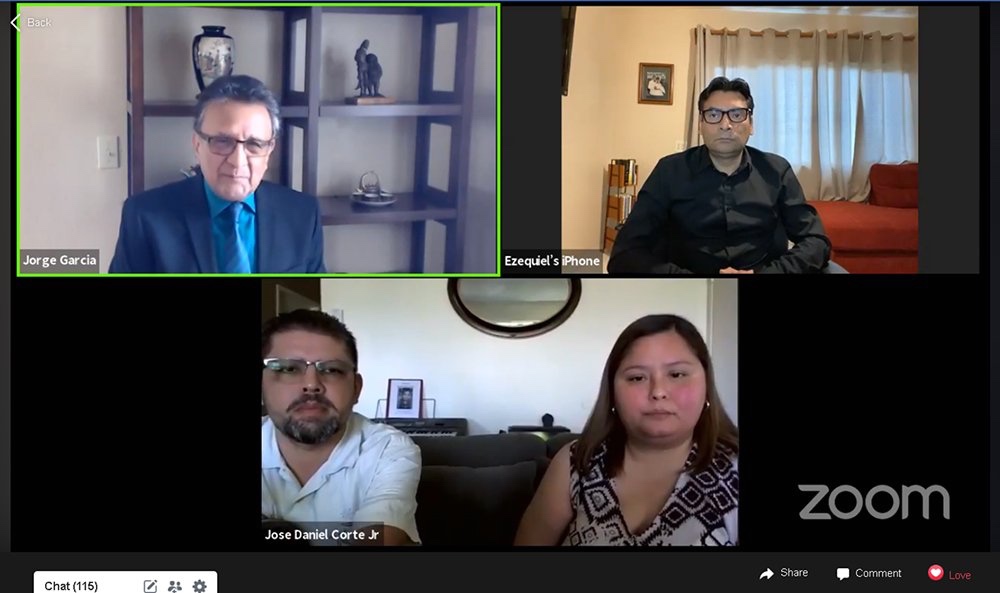
ALEJANDRA MOLINA, of Religion News Service, reports on how smaller and older churches in the US are working to stay afloat in the midst of the coronavirus crisis…
Pastor Jorge García of Gracia y Paz Covenant Church said the church received its first set of offerings this past week since it started to exclusively offer worship services online about four Sundays ago.
The Chula Vista church in San Diego County has a PayPal account, but he said parishioners never used it since they would normally provide their tithes in person during Sunday service. Some are contributing through PayPal or going to the bank to make a deposit into the church account, but many are still not offering, he said.
“Some have stopped working, and if they’re not working they don’t have money to offer,” García said. “I would hope our church could be in a position to help them.”

A small chapel in the Yosemite Valley in the US. PICTURE: Jesse Callahan/Unsplash
Gracia y Paz, which has a membership of about 50 people, including children, relies on offerings to stay afloat and pay its rent. The parish rents space from a sister Evangelical Covenant Church congregation, and Garcia recently learned their rent was forgiven for the next three months.
Rent is their biggest expenditure, and if they still had to pay for it as offerings dwindle, “we wouldn’t be able to continue,” he said.
“Being a Christian doesn’t mean we’re shielded from problems that come. We get sick. We lose jobs. Our family members die. The difference is that we have faith in God.”
– Pastor Jorge García of Gracia y Paz Covenant Church
With social distancing guidelines in place to prevent the spread of COVID-19, small churches across the United States may be struggling with declining weekly tithes and adapting to virtual services. Many small churches don’t have hefty savings accounts or large annual incomes and rely heavily or solely on weekly offerings.
But, they’re not giving up.
“Being a Christian doesn’t mean we’re shielded from problems that come. We get sick. We lose jobs. Our family members die,” García said. “The difference is that we have faith in God.”
“If we take the necessary precautions, we’re going to trust that nothing is going to happen to us and this will pass,” he added.
Research shows that the financial outlook is shaky for many small churches.
On average, churches with weekly attendance of 50 or fewer people generated an annual income of $US45,000, according to 2015 data from Faith Communities Today research coalition, which runs national surveys on congregations. That’s compared to an average annual income of $US312,000 among all surveyed congregations.
More than 4,400 congregations around the country of all different faith groups and denominations were surveyed in 2015.
The 2015 data also shows that parishioners from smaller congregations (with a weekly attendance of 50 or fewer people) gave less money than those from churches with weekly attendance of more than 100 people.

Pastor Jorge L García, top left, holds an online worship service with Gracia y Paz Covenant Church members Ezequiel Velazquez, top right, and Jose Daniel and Bianca Corte via the Zoom app, on Sunday, 29th March. PICTURE: Screenshot courtesy of Jorge L García
Director of the Hartford Institute for Religion Research Scott Thumma, who helped lead the Faith Communities Today project, said small churches look different depending on the region. About 44 per cent of these small churches are located in rural areas.
Churches in small towns or rural areas may have an advantage, Thumma said. If a congregation is struggling in a city, there may be people who would want that property, “but in a small rural area the church can exist because there is not great demand for their building,” he said.
Thumma said churches that were once large and were already on the decline are the most in danger. The pandemic, he said, will potentially accelerate that decline. “They’re in the midst of transition…and now it’s exacerbated by all the other things going on externally,” he said.
Christian faith leaders have taken note, and on 3rd April, the Churches Helping Churches Initiative launched to urge larger and more stable churches to assist the smaller parishes that are at risk of closing in low-income communities across the nation. The initiative is led by the AND campaign with support from other organizations like the National Latino Evangelical Coalition and the Pinetops Foundation.
This effort includes a relief fund that will provide $US3,000 grants to churches that could potentially close within the next three months due to a steep loss in financial giving. Organisers hope to raise at least $US500,000 in April through help from Christian donors, foundations and large churches. More than 20 donors have already contributed more than $US160,000.
“Although the Federal Government has moved to provide some assistance to Americans and non-profits, we believe that the church should be the first to help their brothers and sisters in need,” said Justin Giboney, president of the AND Campaign, in a statement.
Another difficult factor for small churches is often the age of the congregation.
“Although the Federal Government has moved to provide some assistance to Americans and non-profits, we believe that the church should be the first to help their brothers and sisters in need.”
– Justin Giboney, president of the AND Campaign.
Thumma said it’s more common for small congregations – churches with weekly attendance of 50 or fewer – to have members over the age of 65.
Data from the most recent Faith Communities Today research shows that in 2015 more than half of small churches (52 per cent) have a membership that’s at least one-third seniors. Whereas, in larger churches (with weekly attendance of 100 or more), just 11 per cent have a membership made up of at least one-third seniors.
While having the ability to go online for services could help smaller churches remain viable during this time, Thumma pointed out that having more seniors in the congregation who are less likely to use social media would make it difficult to set up online giving.
For Rev Jane Quandt, who leads a small United Church of Christ parish in the town of Lompoc in Santa Barbara County, it has been difficult for her congregation of mostly seniors to grasp the idea of shifting their church life online. However, she did see an uptick of donations compared to February and January.
PREVIOUSLY: In the US, larger churches urged to help smaller ones survive during pandemic
Parishioners are not tech savvy, “so there hasn’t been a transition to virtual,” Quandt said. In the meantime, Quandt is writing a daily devotional that she’s sending to church members through email. This past Sunday, she hosted a Zoom coffee hour “because I know how much they miss seeing each other.”
Quandt said the church relies completely on offerings, which people have been mailing to the parish financial secretary. The church does not have an online system for donating. Additionally, the church owns its own building and is currently not charging rent to a small nursery that operates out of the parish.
For Quandt, this pandemic is just something else her congregants, many who are retired military members, will survive.
“Most of my people have already weathered their fair share in life, so I’m pretty sure we’ll make it through this just fine,” she said.





